5 Key Elements to Help You Prepare For a Long Hike
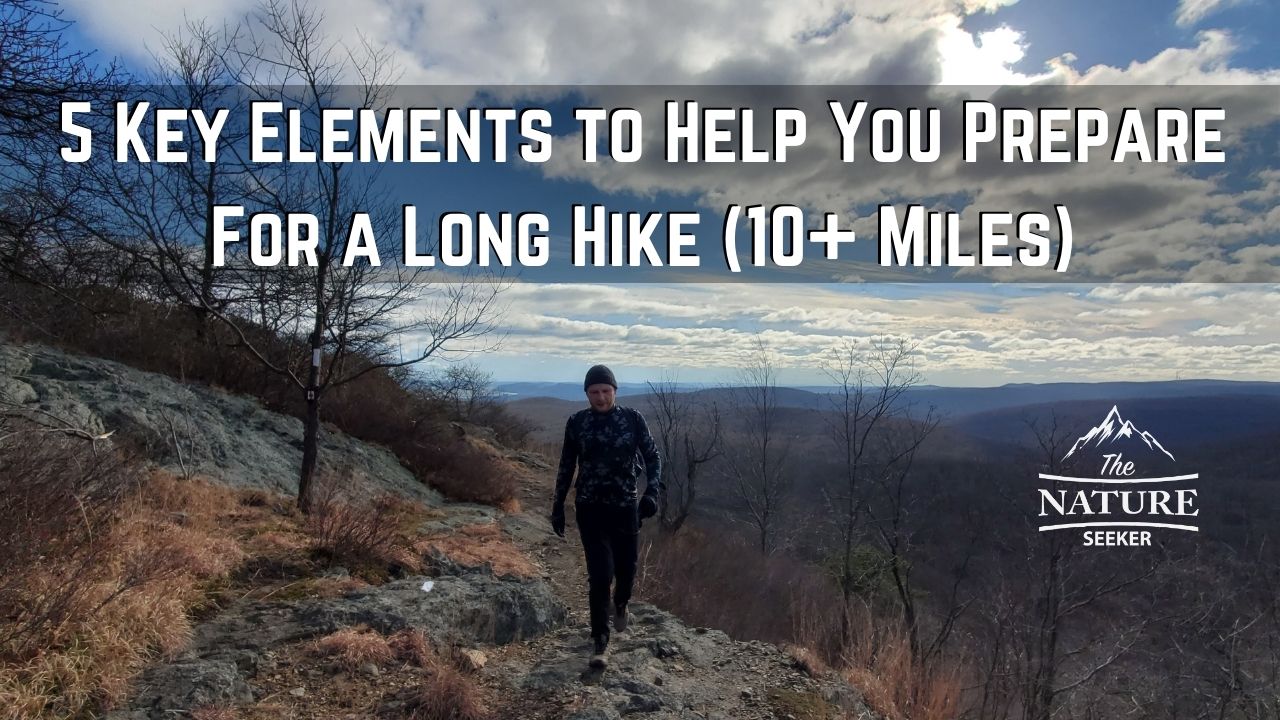
When it comes to knowing how to prepare for a long hike, I’ve found that the following 5 elements are key:
 To me, a long hike is any trail over 10 miles long and this is based on a few things:
To me, a long hike is any trail over 10 miles long and this is based on a few things:
 I can’t tell you how many times I got lost in the woods since I started seriously hiking. It’s a freaky situation to be in if you’re not careful, not to mention all the stress and panic zaps your energy in significant ways.
I linked an article that will help you become more aware of your surroundings when you hike and when you do your long trails, make sure to know how to read trail markers and just as importantly, map out your hike ahead of time and keep the map on hand at all times.
Sometimes it may become necessary to cut corners or try shortcut trails to save daylight, so the more map and surrounding awareness you have, the better off you’ll be. If you’re just a beginner, hike easy and short trails at first to become better at this (under 5 miles is considered an easy trail). I also suggest keeping apps like Alltrails and tools like a compass handy on you (they are great to reference when you’re on your trail). This is one of the most important hiking tips for beginners I recommend knowing about.
I can’t tell you how many times I got lost in the woods since I started seriously hiking. It’s a freaky situation to be in if you’re not careful, not to mention all the stress and panic zaps your energy in significant ways.
I linked an article that will help you become more aware of your surroundings when you hike and when you do your long trails, make sure to know how to read trail markers and just as importantly, map out your hike ahead of time and keep the map on hand at all times.
Sometimes it may become necessary to cut corners or try shortcut trails to save daylight, so the more map and surrounding awareness you have, the better off you’ll be. If you’re just a beginner, hike easy and short trails at first to become better at this (under 5 miles is considered an easy trail). I also suggest keeping apps like Alltrails and tools like a compass handy on you (they are great to reference when you’re on your trail). This is one of the most important hiking tips for beginners I recommend knowing about.
 I’ve found the following exercises are pivotal to your endurance on a hike, especially ones that require you scramble upwards:
I’ve found the following exercises are pivotal to your endurance on a hike, especially ones that require you scramble upwards:
 There’s a few things I suggest you keep you on for a long hike. Most of these come from my post on essential things to bring on a hike, but here’s the quick list:
There’s a few things I suggest you keep you on for a long hike. Most of these come from my post on essential things to bring on a hike, but here’s the quick list:
 The better the quality of the gear you wear, the easier and more fun your long hike will be and the thing is you don’t need to be overly fancy and buy the most expensive stuff, but I would invest in certain gear that really does match it’s price in the value you get out of it. Here’s the typical stuff I wear:
Salomon Speedcross 5 trail running shoes (they make hiking a lot easier). Another option (if you prefer hiking/walking over trail running) would be simple but good hiking shoes like the Ozark hiking shoes I have worn for at least 50 miles.
Rash guard shirt. You’ll sweat a lot and these shirts will absorb that.
Waterproof socks. I typically wear either the Showers Pass or Randy sun waterproof socks. Most of your hikes, especially the long ones will usually have mud, water (or rain) involved and trust me when I say, you don’t want your feet to get wet and risk problems. Waterproof socks are a great investment in just about any type of hiking environment (rain, snow, mud, cold, hot, ect…).
I also recommend reading the following 2 articles I’ve written on what to wear depending on the weather conditions:
The better the quality of the gear you wear, the easier and more fun your long hike will be and the thing is you don’t need to be overly fancy and buy the most expensive stuff, but I would invest in certain gear that really does match it’s price in the value you get out of it. Here’s the typical stuff I wear:
Salomon Speedcross 5 trail running shoes (they make hiking a lot easier). Another option (if you prefer hiking/walking over trail running) would be simple but good hiking shoes like the Ozark hiking shoes I have worn for at least 50 miles.
Rash guard shirt. You’ll sweat a lot and these shirts will absorb that.
Waterproof socks. I typically wear either the Showers Pass or Randy sun waterproof socks. Most of your hikes, especially the long ones will usually have mud, water (or rain) involved and trust me when I say, you don’t want your feet to get wet and risk problems. Waterproof socks are a great investment in just about any type of hiking environment (rain, snow, mud, cold, hot, ect…).
I also recommend reading the following 2 articles I’ve written on what to wear depending on the weather conditions:
 Unless you plan on camping somewhere, you’re likely going to be doing a day hike the way I do and trust me when I say, the last thing you ever want is to be stuck on a trail when the sun is setting or it’s dark. It’s a terror inducing feeling (unless you know where you’re going), but to prevent this problem from happening, here’s a few tips:
1) I suggest doing hikes in the spring and summer. You just have more daylight to spare then and this is key to long hikes since you’ll likely be on a trail for at least 10 hours so give yourself at least 12 hours of daylight for it until you become more confident.
2) Always leave super early to arrive at the trail you’re taking around the time the sun is rising (You give yourself maximum daylight).
3) I would avoid hiking in the winter because the sun does set a lot earlier and unless you’re experienced and can manage your time/hiking/distance to avoid the dark, don’t do it.
4) Know that the sun typically sets a lot faster in the woods than it does in places like a city. This is because the elevation is a lot higher. Think of it this way: If the sun typically sets at 8 p.m your time in the city, make sure you’re done with your long hike by 5-6 p.m as it’ll likely feel a lot darker in the woods by the 5-6 p.m time frame.
You will likely have moments on a long hike where you’ll want to stop, relax, eat or you’ll even get lost and will need to retrace your steps. Any extra amount of daylight you have if and when those moments happen will work to your advantage. It just becomes all the more difficult the darker it gets and the best thing to do is just avoid such a scenario.
Unless you plan on camping somewhere, you’re likely going to be doing a day hike the way I do and trust me when I say, the last thing you ever want is to be stuck on a trail when the sun is setting or it’s dark. It’s a terror inducing feeling (unless you know where you’re going), but to prevent this problem from happening, here’s a few tips:
1) I suggest doing hikes in the spring and summer. You just have more daylight to spare then and this is key to long hikes since you’ll likely be on a trail for at least 10 hours so give yourself at least 12 hours of daylight for it until you become more confident.
2) Always leave super early to arrive at the trail you’re taking around the time the sun is rising (You give yourself maximum daylight).
3) I would avoid hiking in the winter because the sun does set a lot earlier and unless you’re experienced and can manage your time/hiking/distance to avoid the dark, don’t do it.
4) Know that the sun typically sets a lot faster in the woods than it does in places like a city. This is because the elevation is a lot higher. Think of it this way: If the sun typically sets at 8 p.m your time in the city, make sure you’re done with your long hike by 5-6 p.m as it’ll likely feel a lot darker in the woods by the 5-6 p.m time frame.
You will likely have moments on a long hike where you’ll want to stop, relax, eat or you’ll even get lost and will need to retrace your steps. Any extra amount of daylight you have if and when those moments happen will work to your advantage. It just becomes all the more difficult the darker it gets and the best thing to do is just avoid such a scenario.
- You need to know how to navigate the trail so you don’t get lost.
- You need to be physically prepared for it.
- You need to have the proper supplies (food, water, safety stuff).
- You need to wear the proper clothing depending on the weather.
- Always do a long hike with enough daylight to spare.
What’s considered a long hike?
 To me, a long hike is any trail over 10 miles long and this is based on a few things:
To me, a long hike is any trail over 10 miles long and this is based on a few things:
- My own long hikes that I’ve done, especially in 2021 (I’ll talk about that in a moment). They ranged from 10 miles and up to 17 (in one day). In 2022, I intend to get to about 30 mile hikes in one day.
- Second, if you see what others are saying (A Google search on how long a long hike is), the general consensus is 10+ miles.
- Long Path (420 miles).
- The Long Trail (270+ miles).
- Or even the Appalachian trail (2,500 miles)
- And Pacific Crest (2,500+ miles) trails.
How I learned to prepare myself for long hikes:
I became very inspired in 2021 to do long hikes (in one day) after checking out a YouTube channel called Mediocre ametuer. On that channel, extremely fit people do very long hiking trails, often in one day. I find that stunning and extremely motivational and it’s why I started doing this. When I began, I obviously couldn’t do what these guys could, but I figured with proper training, I could eventually reach their level and so what I started doing was weekly drives to some of the best hikes near NYC where I live and each time I’d try to challenge myself more and more. It began with 5 miles hikes like the Bull Hill Loop Trail or the Reeves Brook Trail in Harriman State Park and it slowly expanded in distance and even combining trails I already did for an extra challenge. Eventually, I reached a significant growth point in my quest where my abilities rose more than I imagined they could. Here’s 3 moments in which this became clear to me:- My 7 mile day hike on Devils Path (hard trail). I never got tired.
- My 15 mile day hike across 3 different state parks in Finger Lakes. Didn’t get tired either.
- My 17 mile day hike in Harriman State Park (where I ran into a bear). This trail tired me out, but I made it back to my car with plenty of energy to spare.
1) You have to know how to navigate trails:
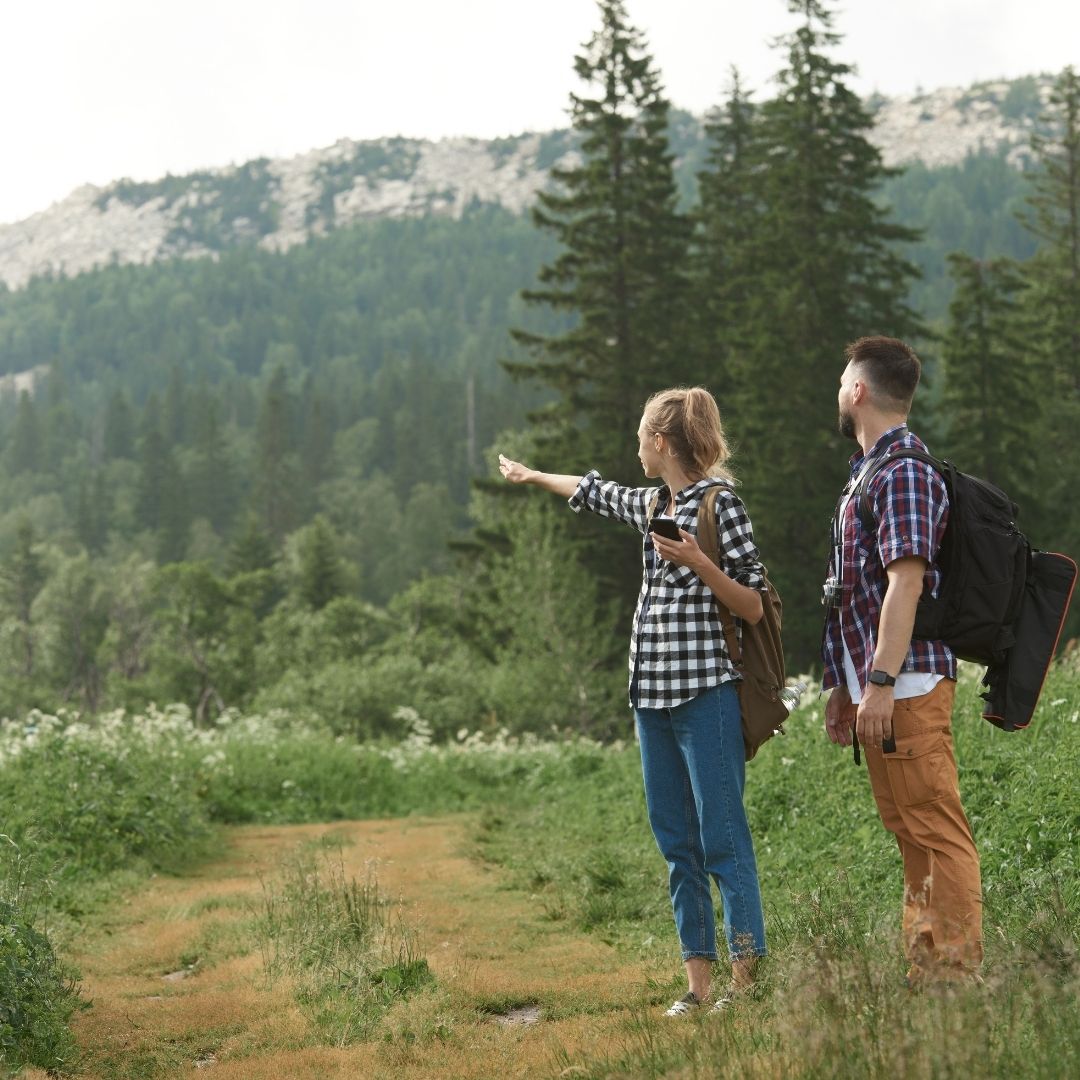 I can’t tell you how many times I got lost in the woods since I started seriously hiking. It’s a freaky situation to be in if you’re not careful, not to mention all the stress and panic zaps your energy in significant ways.
I linked an article that will help you become more aware of your surroundings when you hike and when you do your long trails, make sure to know how to read trail markers and just as importantly, map out your hike ahead of time and keep the map on hand at all times.
Sometimes it may become necessary to cut corners or try shortcut trails to save daylight, so the more map and surrounding awareness you have, the better off you’ll be. If you’re just a beginner, hike easy and short trails at first to become better at this (under 5 miles is considered an easy trail). I also suggest keeping apps like Alltrails and tools like a compass handy on you (they are great to reference when you’re on your trail). This is one of the most important hiking tips for beginners I recommend knowing about.
I can’t tell you how many times I got lost in the woods since I started seriously hiking. It’s a freaky situation to be in if you’re not careful, not to mention all the stress and panic zaps your energy in significant ways.
I linked an article that will help you become more aware of your surroundings when you hike and when you do your long trails, make sure to know how to read trail markers and just as importantly, map out your hike ahead of time and keep the map on hand at all times.
Sometimes it may become necessary to cut corners or try shortcut trails to save daylight, so the more map and surrounding awareness you have, the better off you’ll be. If you’re just a beginner, hike easy and short trails at first to become better at this (under 5 miles is considered an easy trail). I also suggest keeping apps like Alltrails and tools like a compass handy on you (they are great to reference when you’re on your trail). This is one of the most important hiking tips for beginners I recommend knowing about.
2) Physical fitness is essential:
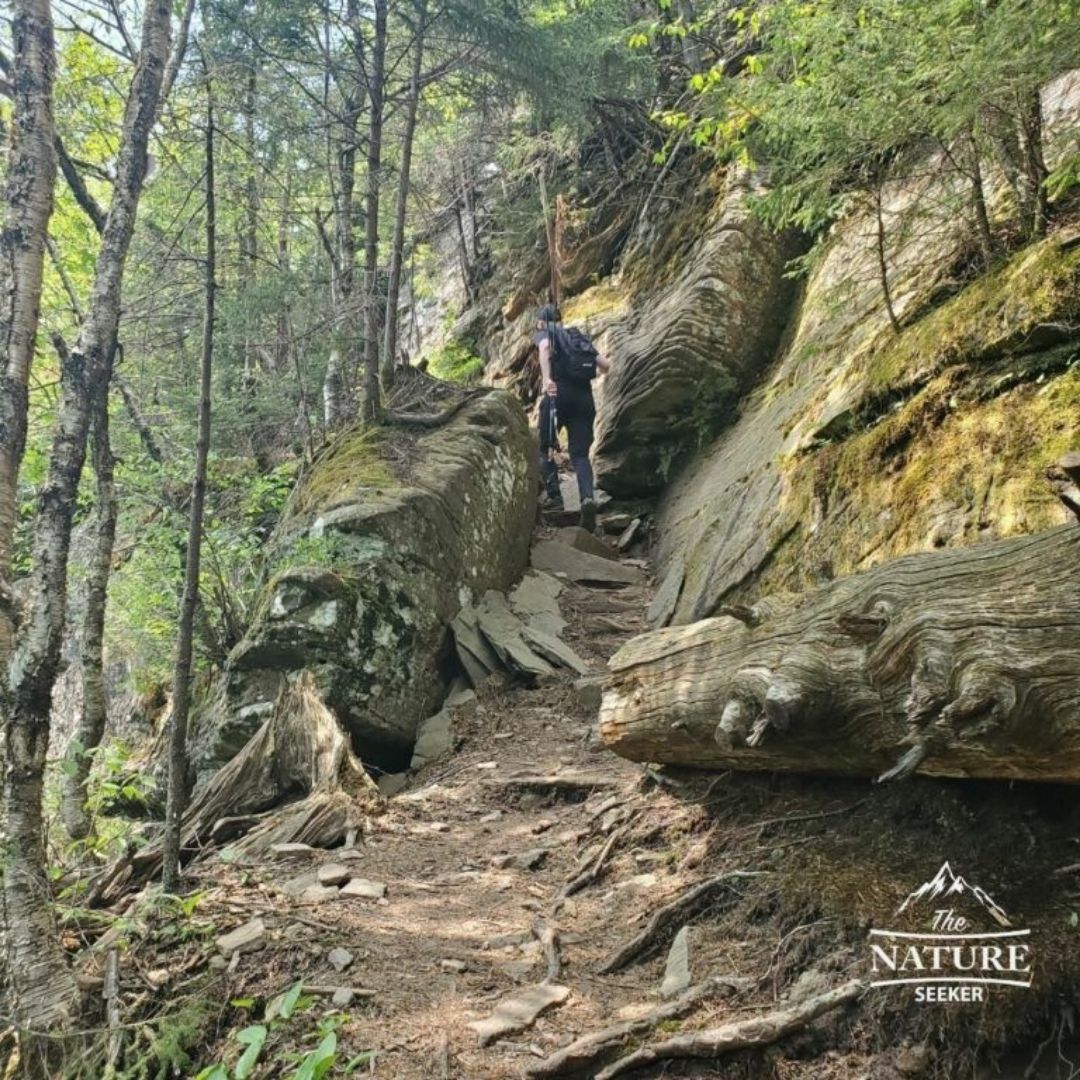 I’ve found the following exercises are pivotal to your endurance on a hike, especially ones that require you scramble upwards:
I’ve found the following exercises are pivotal to your endurance on a hike, especially ones that require you scramble upwards:
- Stair master or just walking up the stairs (this is the best exercise for hiking). In my case, I reached a point where I was doing 1,000+ steps on the stair master. Just make sure you stretch your legs and behind afterwards.
- Burpees. These are great if you intend to do trail runs. There’s a lot of explosive motion involved in trail running and these exercises help your body prepare for it.
- Swimming. Swimming is just good all around and in regards to hiking, it will just help your gas tank last longer on the hike.
- Lifting. Odds are, when you go on a long hike, you’ll be carrying a backpack with a lot of weight in it (the most I’ve carried was 30 pounds) and being able to walk/jog/hike with that on you is huge. The lifting exercises I’ve done include kettle bell swings, barbell lifts and walking with weights on you.
- Calesthetic exercises. Pull ups, pushups, leg raises while doing pull ups are huge for your body’s muscle mass to become strong. This will help you greatly.
3) Carry proper supplies, especially for long hikes:
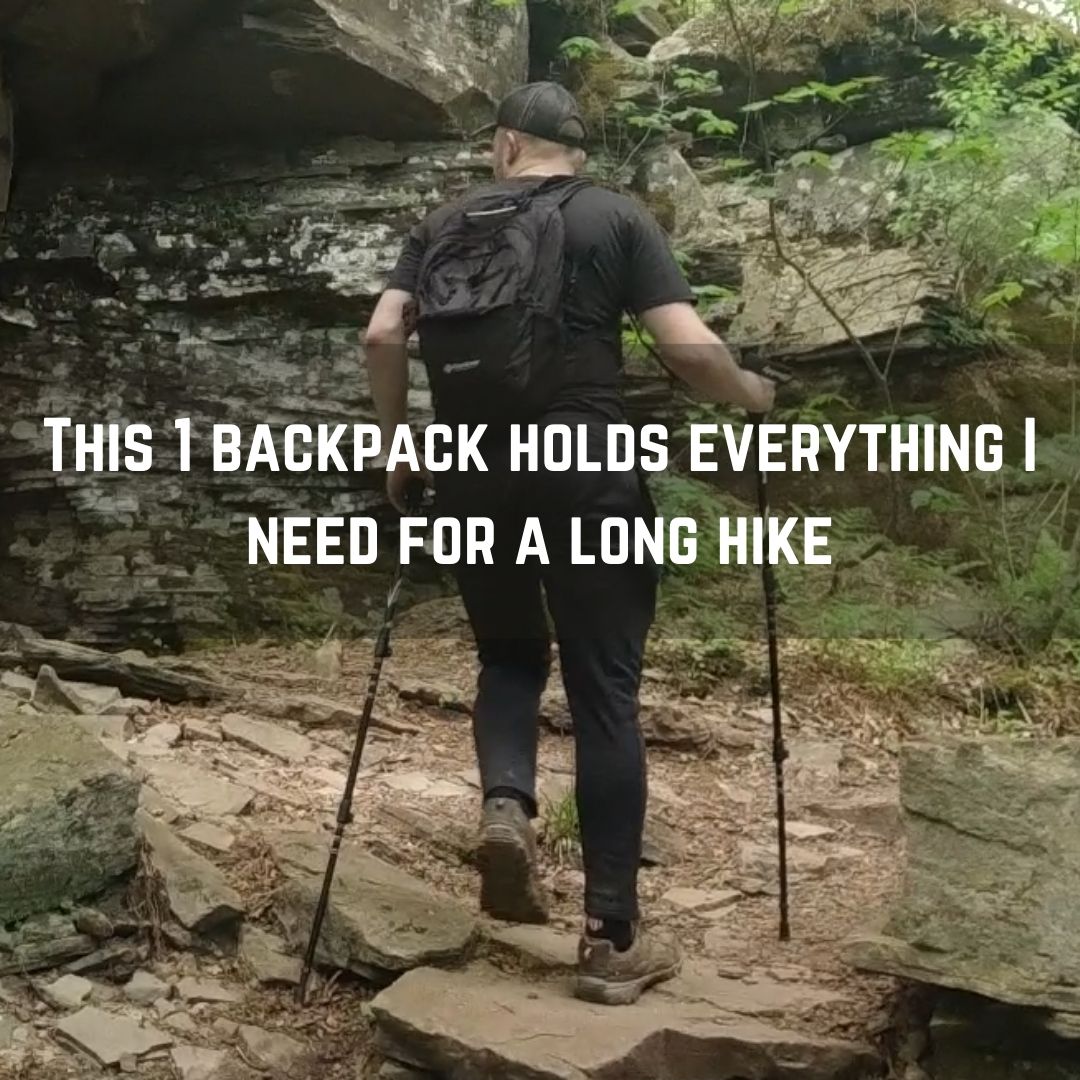 There’s a few things I suggest you keep you on for a long hike. Most of these come from my post on essential things to bring on a hike, but here’s the quick list:
There’s a few things I suggest you keep you on for a long hike. Most of these come from my post on essential things to bring on a hike, but here’s the quick list:
- A backpack to carry most of your supplies. I use this Outdoor products hydration backpack.
- Water. I typically carry about 4 liters of water on me (for 10 or more miles).
- pH salts. This is very important and I mix that with 1 of the liters of water I carry (it prevents cramps).
- Candy bars or a snack. Typically I will carry about 500-1,000 calories of food on me.
- Bear spray. This is huge, especially if you’re hiking where bears are known to be.
- Trekking poles. If you ever get tired (which you will on a long hike), trekking poles will help you go further and longer on your hike. I use the Trailbuddy Trekking Poles and they are amazing. I can easily hike 2-3x longer thanks to them.
- A change of clothes (if and when I get too sweaty, I’ll wash up, change shirts and this helps a lot).
- Compass (maps, Alltrails app).
4) Proper clothing and gear is also necessary:
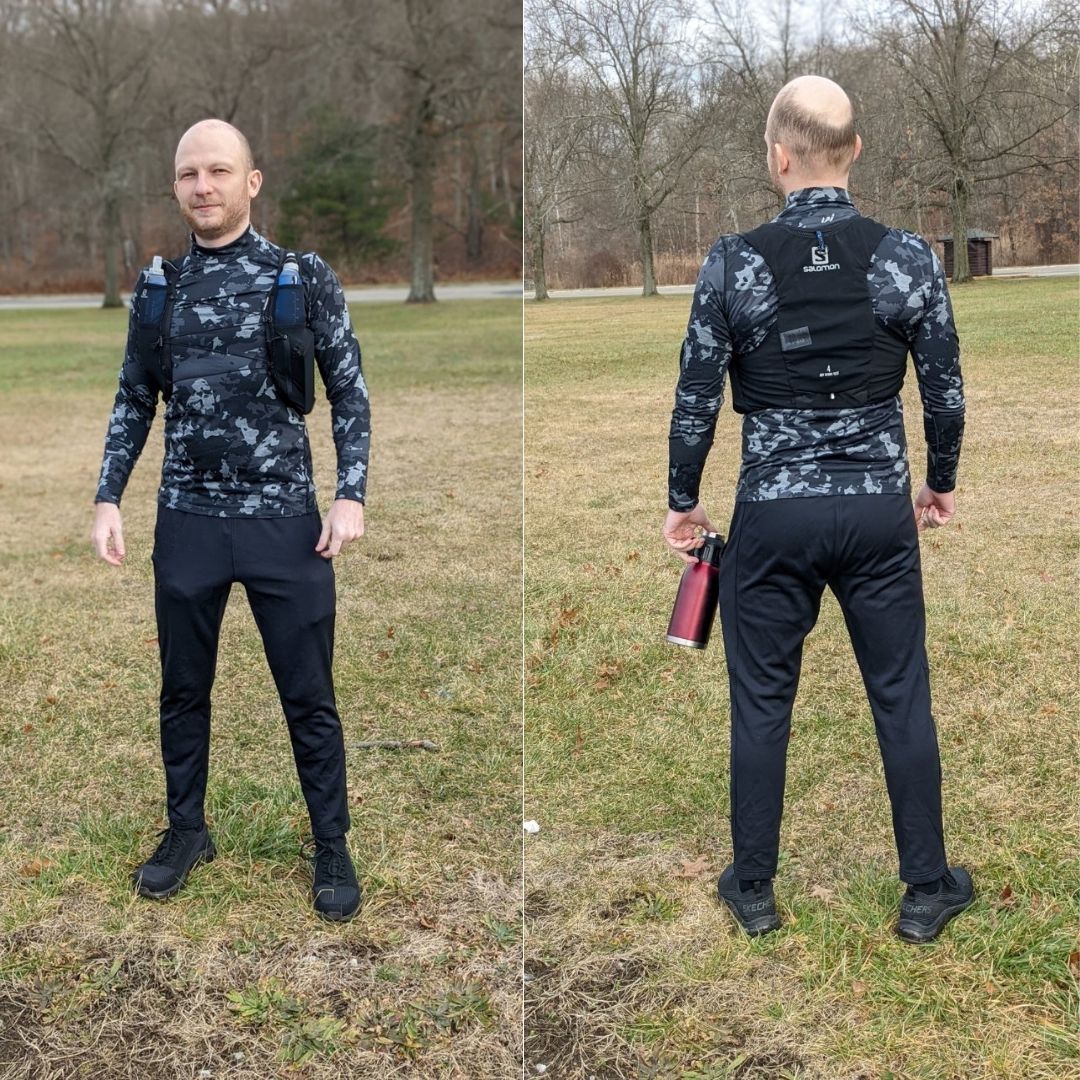 The better the quality of the gear you wear, the easier and more fun your long hike will be and the thing is you don’t need to be overly fancy and buy the most expensive stuff, but I would invest in certain gear that really does match it’s price in the value you get out of it. Here’s the typical stuff I wear:
Salomon Speedcross 5 trail running shoes (they make hiking a lot easier). Another option (if you prefer hiking/walking over trail running) would be simple but good hiking shoes like the Ozark hiking shoes I have worn for at least 50 miles.
Rash guard shirt. You’ll sweat a lot and these shirts will absorb that.
Waterproof socks. I typically wear either the Showers Pass or Randy sun waterproof socks. Most of your hikes, especially the long ones will usually have mud, water (or rain) involved and trust me when I say, you don’t want your feet to get wet and risk problems. Waterproof socks are a great investment in just about any type of hiking environment (rain, snow, mud, cold, hot, ect…).
I also recommend reading the following 2 articles I’ve written on what to wear depending on the weather conditions:
The better the quality of the gear you wear, the easier and more fun your long hike will be and the thing is you don’t need to be overly fancy and buy the most expensive stuff, but I would invest in certain gear that really does match it’s price in the value you get out of it. Here’s the typical stuff I wear:
Salomon Speedcross 5 trail running shoes (they make hiking a lot easier). Another option (if you prefer hiking/walking over trail running) would be simple but good hiking shoes like the Ozark hiking shoes I have worn for at least 50 miles.
Rash guard shirt. You’ll sweat a lot and these shirts will absorb that.
Waterproof socks. I typically wear either the Showers Pass or Randy sun waterproof socks. Most of your hikes, especially the long ones will usually have mud, water (or rain) involved and trust me when I say, you don’t want your feet to get wet and risk problems. Waterproof socks are a great investment in just about any type of hiking environment (rain, snow, mud, cold, hot, ect…).
I also recommend reading the following 2 articles I’ve written on what to wear depending on the weather conditions:
- Here’s a post on what to wear when hiking in the rain.
- And here’s a post on what to wear when hiking in the cold.
- And finally, here’s a post on what to wear when hiking in the summer (most dangerous situation).
5) Make sure you do a long hike with enough daylight to spare:
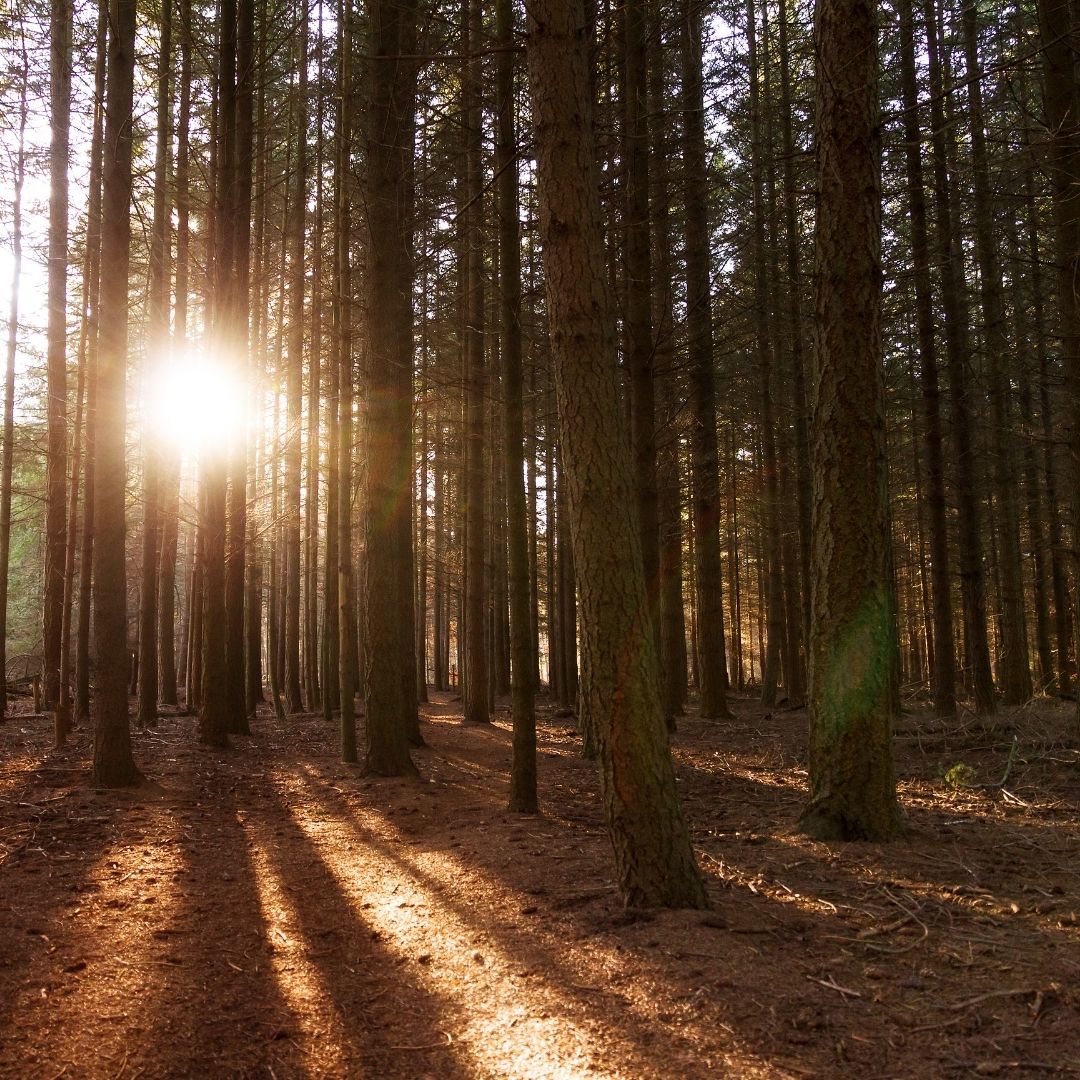 Unless you plan on camping somewhere, you’re likely going to be doing a day hike the way I do and trust me when I say, the last thing you ever want is to be stuck on a trail when the sun is setting or it’s dark. It’s a terror inducing feeling (unless you know where you’re going), but to prevent this problem from happening, here’s a few tips:
1) I suggest doing hikes in the spring and summer. You just have more daylight to spare then and this is key to long hikes since you’ll likely be on a trail for at least 10 hours so give yourself at least 12 hours of daylight for it until you become more confident.
2) Always leave super early to arrive at the trail you’re taking around the time the sun is rising (You give yourself maximum daylight).
3) I would avoid hiking in the winter because the sun does set a lot earlier and unless you’re experienced and can manage your time/hiking/distance to avoid the dark, don’t do it.
4) Know that the sun typically sets a lot faster in the woods than it does in places like a city. This is because the elevation is a lot higher. Think of it this way: If the sun typically sets at 8 p.m your time in the city, make sure you’re done with your long hike by 5-6 p.m as it’ll likely feel a lot darker in the woods by the 5-6 p.m time frame.
You will likely have moments on a long hike where you’ll want to stop, relax, eat or you’ll even get lost and will need to retrace your steps. Any extra amount of daylight you have if and when those moments happen will work to your advantage. It just becomes all the more difficult the darker it gets and the best thing to do is just avoid such a scenario.
Unless you plan on camping somewhere, you’re likely going to be doing a day hike the way I do and trust me when I say, the last thing you ever want is to be stuck on a trail when the sun is setting or it’s dark. It’s a terror inducing feeling (unless you know where you’re going), but to prevent this problem from happening, here’s a few tips:
1) I suggest doing hikes in the spring and summer. You just have more daylight to spare then and this is key to long hikes since you’ll likely be on a trail for at least 10 hours so give yourself at least 12 hours of daylight for it until you become more confident.
2) Always leave super early to arrive at the trail you’re taking around the time the sun is rising (You give yourself maximum daylight).
3) I would avoid hiking in the winter because the sun does set a lot earlier and unless you’re experienced and can manage your time/hiking/distance to avoid the dark, don’t do it.
4) Know that the sun typically sets a lot faster in the woods than it does in places like a city. This is because the elevation is a lot higher. Think of it this way: If the sun typically sets at 8 p.m your time in the city, make sure you’re done with your long hike by 5-6 p.m as it’ll likely feel a lot darker in the woods by the 5-6 p.m time frame.
You will likely have moments on a long hike where you’ll want to stop, relax, eat or you’ll even get lost and will need to retrace your steps. Any extra amount of daylight you have if and when those moments happen will work to your advantage. It just becomes all the more difficult the darker it gets and the best thing to do is just avoid such a scenario.
Why you need all 5 elements to properly prepare for your long hike:
I’ve learned the hard way that cutting corners or not taking a long hike seriously could truly endanger your life and that the best place to be is to make sure all 5 elements are in place before you go. Here’s a few examples:- Despite being physically fit (element 2), I’ve gotten lost too many times because I needed to work on my navigation skills (element 1).
- Despite having a lot of water, I didn’t bring all the supplies I needed (element 3) on one of my long hikes and thus I had cramps with 5 more miles to go (this was a seriously bad situation I was in).
- Because I didn’t wear waterproof socks (element 4), I had to hike in mud and thus had massive problems hiking with the mud drying up and rubbing against my feet (calluses).
- I’ve had moments where I’ve started a hike late (lack of element 5) and ended up barely finishing the trail when it was dark (had to walk around with flashlights).
